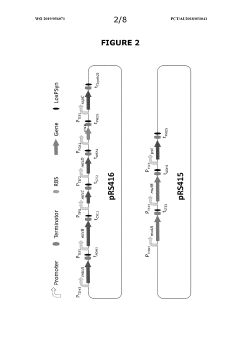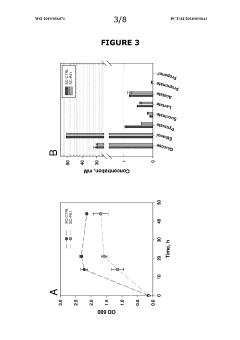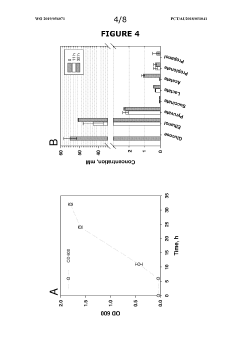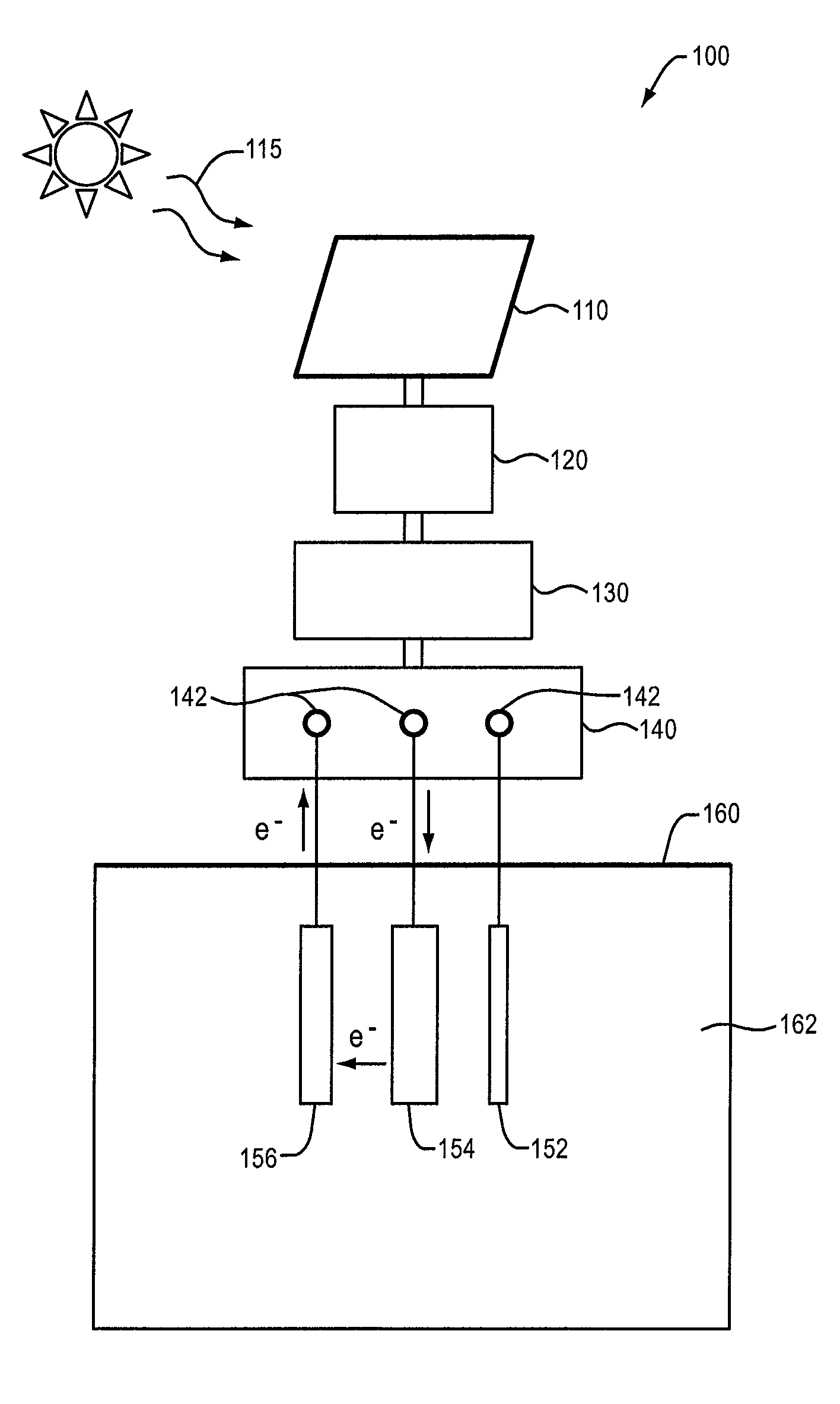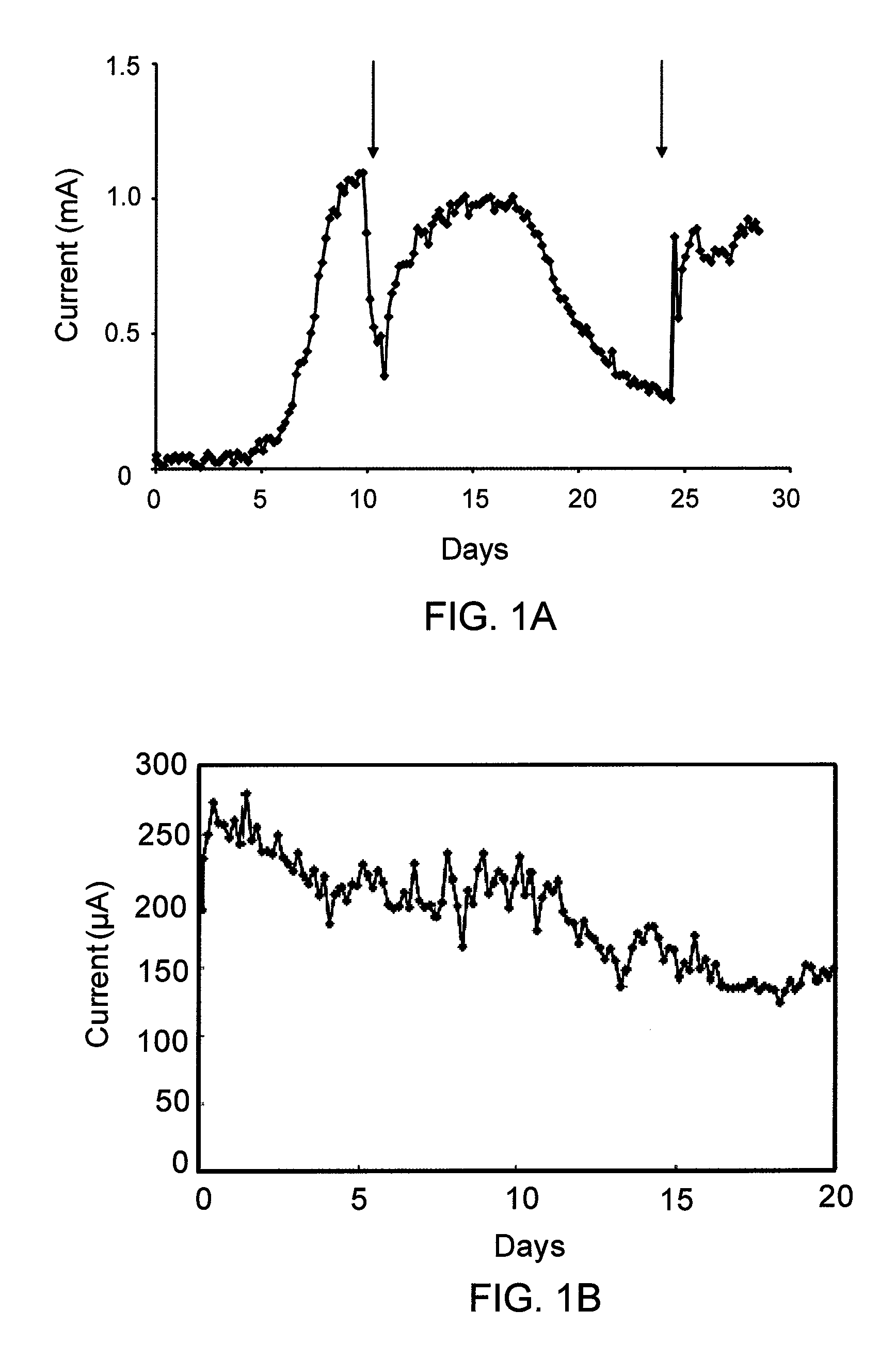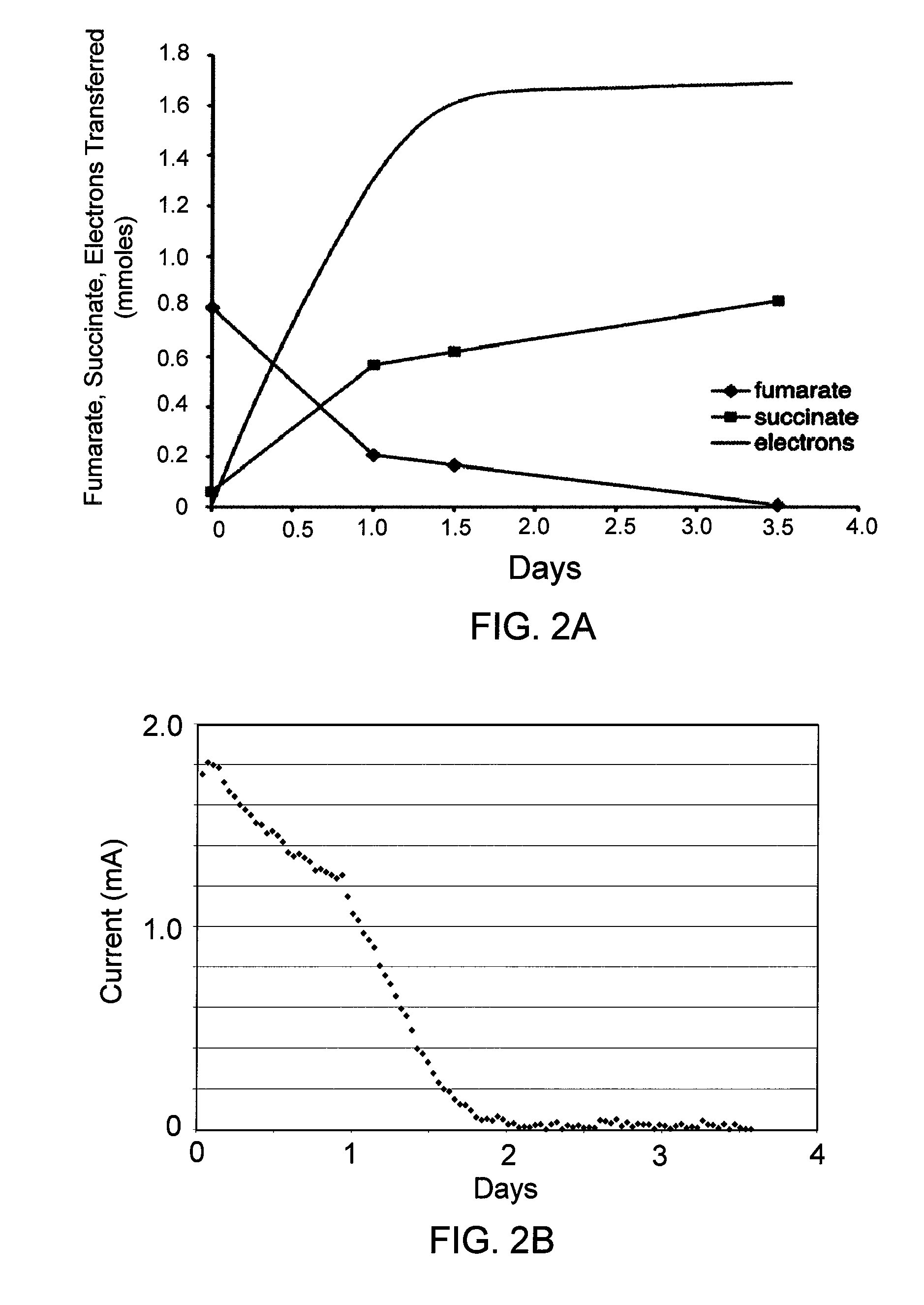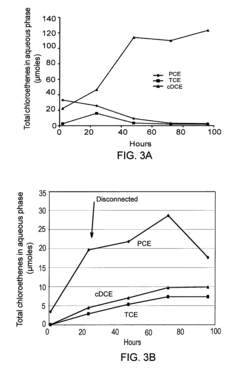Ethyl Propanoate Usage in Environmental Remediation Technologies
JUL 22, 202510 MIN READ
Generate Your Research Report Instantly with AI Agent
Patsnap Eureka helps you evaluate technical feasibility & market potential.
Ethyl Propanoate Background and Objectives
Ethyl propanoate, also known as ethyl propionate, is an organic compound with the chemical formula C5H10O2. It is a colorless liquid with a fruity odor, commonly used as a flavoring agent in the food industry. In recent years, there has been growing interest in exploring its potential applications in environmental remediation technologies.
The development of ethyl propanoate as an environmental remediation agent can be traced back to the early 2000s when researchers began investigating alternative, eco-friendly solvents for various industrial processes. As concerns about the environmental impact of traditional chemical solvents grew, scientists turned their attention to naturally occurring esters like ethyl propanoate, which exhibit low toxicity and biodegradability.
The evolution of ethyl propanoate in environmental remediation has been driven by several factors, including the increasing demand for sustainable and green technologies, stricter environmental regulations, and the need for more efficient and cost-effective remediation methods. Over the past two decades, researchers have made significant progress in understanding the chemical properties and behavior of ethyl propanoate in various environmental matrices, paving the way for its application in soil and water treatment.
One of the key objectives in the development of ethyl propanoate-based remediation technologies is to harness its unique solvent properties for the removal of organic contaminants from soil and water. The compound's ability to dissolve a wide range of organic substances, coupled with its low toxicity and biodegradability, makes it an attractive alternative to traditional petroleum-based solvents.
Another important goal is to optimize the use of ethyl propanoate in combination with other remediation techniques, such as bioremediation and chemical oxidation. Researchers aim to develop synergistic approaches that leverage the strengths of multiple remediation methods to achieve more effective and efficient contaminant removal.
The current technological landscape surrounding ethyl propanoate in environmental remediation is characterized by ongoing research and development efforts focused on improving its efficacy, scalability, and cost-effectiveness. Scientists are exploring various formulations and delivery methods to enhance the compound's performance in different environmental conditions and contaminant scenarios.
As the field continues to evolve, future objectives include the development of novel ethyl propanoate-based remediation technologies that can address a broader range of environmental contaminants, including emerging pollutants and complex mixtures of organic compounds. Additionally, researchers are working towards optimizing the production and recovery of ethyl propanoate to ensure its economic viability and sustainability in large-scale remediation projects.
The development of ethyl propanoate as an environmental remediation agent can be traced back to the early 2000s when researchers began investigating alternative, eco-friendly solvents for various industrial processes. As concerns about the environmental impact of traditional chemical solvents grew, scientists turned their attention to naturally occurring esters like ethyl propanoate, which exhibit low toxicity and biodegradability.
The evolution of ethyl propanoate in environmental remediation has been driven by several factors, including the increasing demand for sustainable and green technologies, stricter environmental regulations, and the need for more efficient and cost-effective remediation methods. Over the past two decades, researchers have made significant progress in understanding the chemical properties and behavior of ethyl propanoate in various environmental matrices, paving the way for its application in soil and water treatment.
One of the key objectives in the development of ethyl propanoate-based remediation technologies is to harness its unique solvent properties for the removal of organic contaminants from soil and water. The compound's ability to dissolve a wide range of organic substances, coupled with its low toxicity and biodegradability, makes it an attractive alternative to traditional petroleum-based solvents.
Another important goal is to optimize the use of ethyl propanoate in combination with other remediation techniques, such as bioremediation and chemical oxidation. Researchers aim to develop synergistic approaches that leverage the strengths of multiple remediation methods to achieve more effective and efficient contaminant removal.
The current technological landscape surrounding ethyl propanoate in environmental remediation is characterized by ongoing research and development efforts focused on improving its efficacy, scalability, and cost-effectiveness. Scientists are exploring various formulations and delivery methods to enhance the compound's performance in different environmental conditions and contaminant scenarios.
As the field continues to evolve, future objectives include the development of novel ethyl propanoate-based remediation technologies that can address a broader range of environmental contaminants, including emerging pollutants and complex mixtures of organic compounds. Additionally, researchers are working towards optimizing the production and recovery of ethyl propanoate to ensure its economic viability and sustainability in large-scale remediation projects.
Market Analysis for Environmental Remediation Solutions
The environmental remediation market has been experiencing significant growth in recent years, driven by increasing awareness of environmental issues, stricter regulations, and the need to address legacy contamination. The global environmental remediation market was valued at approximately $85 billion in 2020 and is projected to reach $142 billion by 2027, growing at a CAGR of 7.5% during the forecast period.
Ethyl propanoate, also known as ethyl propionate, is emerging as a promising solution in environmental remediation technologies. Its potential applications in this field are driving market interest and creating new opportunities for growth. The compound's unique properties, including its low toxicity, biodegradability, and effectiveness in dissolving certain pollutants, make it an attractive option for various remediation processes.
The market for ethyl propanoate in environmental remediation is still in its early stages but shows promising potential. As research and development efforts continue to explore its applications, the demand for this compound is expected to increase. The market is primarily driven by its use in soil and groundwater remediation, where it can effectively remove certain organic contaminants.
Key market segments for ethyl propanoate in environmental remediation include industrial site cleanup, brownfield redevelopment, and oil spill remediation. The industrial sector, in particular, presents a significant opportunity due to the high number of contaminated sites requiring treatment. Additionally, the growing focus on sustainable and eco-friendly remediation solutions aligns well with ethyl propanoate's properties, further boosting its market potential.
Geographically, North America and Europe are expected to be the leading markets for ethyl propanoate-based remediation technologies. This is due to their stringent environmental regulations, well-established remediation industries, and ongoing efforts to address historical contamination. However, emerging economies in Asia-Pacific and Latin America are also showing increasing interest in advanced remediation technologies, presenting new growth opportunities.
The competitive landscape for ethyl propanoate in environmental remediation is still developing. Several chemical manufacturers are exploring its production and applications, while environmental service providers are investigating its integration into their remediation processes. As the technology matures, it is likely to attract more players, potentially leading to increased competition and innovation in the market.
Challenges in the market include the need for further research to fully understand ethyl propanoate's effectiveness across various contaminants and environmental conditions. Additionally, cost considerations and regulatory approvals may impact its widespread adoption. However, as more successful case studies emerge and economies of scale are achieved, these barriers are expected to diminish.
Ethyl propanoate, also known as ethyl propionate, is emerging as a promising solution in environmental remediation technologies. Its potential applications in this field are driving market interest and creating new opportunities for growth. The compound's unique properties, including its low toxicity, biodegradability, and effectiveness in dissolving certain pollutants, make it an attractive option for various remediation processes.
The market for ethyl propanoate in environmental remediation is still in its early stages but shows promising potential. As research and development efforts continue to explore its applications, the demand for this compound is expected to increase. The market is primarily driven by its use in soil and groundwater remediation, where it can effectively remove certain organic contaminants.
Key market segments for ethyl propanoate in environmental remediation include industrial site cleanup, brownfield redevelopment, and oil spill remediation. The industrial sector, in particular, presents a significant opportunity due to the high number of contaminated sites requiring treatment. Additionally, the growing focus on sustainable and eco-friendly remediation solutions aligns well with ethyl propanoate's properties, further boosting its market potential.
Geographically, North America and Europe are expected to be the leading markets for ethyl propanoate-based remediation technologies. This is due to their stringent environmental regulations, well-established remediation industries, and ongoing efforts to address historical contamination. However, emerging economies in Asia-Pacific and Latin America are also showing increasing interest in advanced remediation technologies, presenting new growth opportunities.
The competitive landscape for ethyl propanoate in environmental remediation is still developing. Several chemical manufacturers are exploring its production and applications, while environmental service providers are investigating its integration into their remediation processes. As the technology matures, it is likely to attract more players, potentially leading to increased competition and innovation in the market.
Challenges in the market include the need for further research to fully understand ethyl propanoate's effectiveness across various contaminants and environmental conditions. Additionally, cost considerations and regulatory approvals may impact its widespread adoption. However, as more successful case studies emerge and economies of scale are achieved, these barriers are expected to diminish.
Current Challenges in Ethyl Propanoate-Based Remediation
Despite the promising potential of ethyl propanoate in environmental remediation technologies, several significant challenges currently hinder its widespread adoption and effectiveness. One of the primary obstacles is the limited solubility of ethyl propanoate in water, which restricts its application in aqueous environments. This limitation poses difficulties in achieving uniform distribution and optimal contact with contaminants in soil and groundwater systems.
Another challenge lies in the volatility of ethyl propanoate, which can lead to rapid evaporation and loss of the compound during remediation processes. This not only reduces the overall efficiency of the treatment but also raises concerns about potential atmospheric emissions and associated environmental impacts. Developing strategies to control and mitigate these losses is crucial for improving the practicality of ethyl propanoate-based remediation techniques.
The biodegradability of ethyl propanoate, while generally considered an advantage in environmental applications, can also present challenges in maintaining its effectiveness over extended periods. Rapid breakdown by naturally occurring microorganisms may necessitate frequent reapplication or continuous dosing, potentially increasing operational costs and complexity of remediation projects.
Furthermore, the selectivity of ethyl propanoate in targeting specific contaminants remains a significant area of concern. While it has shown promise in addressing certain pollutants, its effectiveness across a broad spectrum of environmental contaminants is not yet fully established. This limitation may restrict its applicability in complex contamination scenarios involving multiple pollutants.
The scalability of ethyl propanoate-based remediation technologies from laboratory studies to field-scale applications presents another substantial challenge. Factors such as soil heterogeneity, varying environmental conditions, and the presence of co-contaminants can significantly impact the performance of ethyl propanoate in real-world settings. Developing robust methodologies for scaling up these technologies while maintaining their efficacy is critical for their practical implementation.
Additionally, the potential for unintended environmental consequences of using ethyl propanoate in remediation efforts requires careful consideration. This includes assessing its impact on non-target organisms, potential alterations to soil and water chemistry, and long-term ecological effects. Comprehensive environmental impact assessments and risk evaluations are necessary to ensure the safe and responsible use of this compound in remediation strategies.
Lastly, regulatory and public acceptance challenges persist in the adoption of ethyl propanoate-based remediation technologies. Establishing clear guidelines for its use, addressing safety concerns, and demonstrating its long-term effectiveness and environmental compatibility are essential steps in overcoming these barriers and facilitating wider acceptance and implementation of these innovative remediation approaches.
Another challenge lies in the volatility of ethyl propanoate, which can lead to rapid evaporation and loss of the compound during remediation processes. This not only reduces the overall efficiency of the treatment but also raises concerns about potential atmospheric emissions and associated environmental impacts. Developing strategies to control and mitigate these losses is crucial for improving the practicality of ethyl propanoate-based remediation techniques.
The biodegradability of ethyl propanoate, while generally considered an advantage in environmental applications, can also present challenges in maintaining its effectiveness over extended periods. Rapid breakdown by naturally occurring microorganisms may necessitate frequent reapplication or continuous dosing, potentially increasing operational costs and complexity of remediation projects.
Furthermore, the selectivity of ethyl propanoate in targeting specific contaminants remains a significant area of concern. While it has shown promise in addressing certain pollutants, its effectiveness across a broad spectrum of environmental contaminants is not yet fully established. This limitation may restrict its applicability in complex contamination scenarios involving multiple pollutants.
The scalability of ethyl propanoate-based remediation technologies from laboratory studies to field-scale applications presents another substantial challenge. Factors such as soil heterogeneity, varying environmental conditions, and the presence of co-contaminants can significantly impact the performance of ethyl propanoate in real-world settings. Developing robust methodologies for scaling up these technologies while maintaining their efficacy is critical for their practical implementation.
Additionally, the potential for unintended environmental consequences of using ethyl propanoate in remediation efforts requires careful consideration. This includes assessing its impact on non-target organisms, potential alterations to soil and water chemistry, and long-term ecological effects. Comprehensive environmental impact assessments and risk evaluations are necessary to ensure the safe and responsible use of this compound in remediation strategies.
Lastly, regulatory and public acceptance challenges persist in the adoption of ethyl propanoate-based remediation technologies. Establishing clear guidelines for its use, addressing safety concerns, and demonstrating its long-term effectiveness and environmental compatibility are essential steps in overcoming these barriers and facilitating wider acceptance and implementation of these innovative remediation approaches.
Existing Ethyl Propanoate Remediation Techniques
01 Synthesis of ethyl propanoate
Ethyl propanoate can be synthesized through various methods, including the esterification of propionic acid with ethanol. This process typically involves catalysts and specific reaction conditions to achieve high yields and purity. The synthesis can be optimized for industrial-scale production, considering factors such as reaction kinetics and thermodynamics.- Synthesis and production methods of ethyl propanoate: Various methods for synthesizing and producing ethyl propanoate are described, including esterification reactions, catalytic processes, and continuous production techniques. These methods aim to improve yield, efficiency, and purity of the final product.
- Applications of ethyl propanoate in fragrances and flavors: Ethyl propanoate is widely used in the fragrance and flavor industry due to its fruity, rum-like odor. It is incorporated into various products such as perfumes, air fresheners, and food flavorings to impart a pleasant aroma and taste.
- Use of ethyl propanoate as a solvent or intermediate: Ethyl propanoate serves as a versatile solvent and intermediate in various chemical processes. It is used in the production of pharmaceuticals, polymers, and other industrial chemicals, offering advantages such as low toxicity and good solvency properties.
- Purification and quality control of ethyl propanoate: Methods for purifying ethyl propanoate and ensuring its quality are described. These include distillation techniques, chromatographic separation, and analytical methods for determining purity and identifying impurities.
- Environmental and safety considerations in ethyl propanoate production: Processes and technologies aimed at improving the environmental impact and safety of ethyl propanoate production are discussed. These include green chemistry approaches, waste reduction strategies, and safety measures for handling and storage.
02 Applications in flavor and fragrance industry
Ethyl propanoate is widely used in the flavor and fragrance industry due to its fruity, rum-like odor. It is commonly employed as a flavoring agent in food products and beverages, as well as in perfumes and cosmetics. The compound's low toxicity and pleasant aroma make it a versatile ingredient in various consumer products.Expand Specific Solutions03 Use as a solvent and intermediate
Ethyl propanoate serves as an effective solvent in various industrial applications, particularly in the production of paints, coatings, and inks. It is also used as a chemical intermediate in the synthesis of other compounds, including pharmaceuticals and agrochemicals. Its low boiling point and good solvency properties make it suitable for these applications.Expand Specific Solutions04 Production methods and process improvements
Continuous efforts are made to improve the production methods of ethyl propanoate, focusing on increasing yield, reducing energy consumption, and minimizing waste. This includes the development of novel catalysts, optimization of reaction conditions, and implementation of more efficient separation and purification techniques. Green chemistry principles are often applied to make the production process more environmentally friendly.Expand Specific Solutions05 Analytical methods and quality control
Various analytical methods are employed to ensure the quality and purity of ethyl propanoate. These include gas chromatography, mass spectrometry, and spectroscopic techniques. Quality control measures are essential for maintaining consistent product quality, especially in industries where the compound is used as a food additive or in pharmaceutical applications. Standardized testing protocols and specifications are often developed for this purpose.Expand Specific Solutions
Key Players in Environmental Remediation Industry
The environmental remediation technology sector utilizing Ethyl Propanoate is in its early growth stage, characterized by increasing market demand and ongoing technological advancements. The global market for environmental remediation is expanding, driven by stricter regulations and growing awareness of environmental issues. While the technology is still evolving, several key players are making significant strides in research and development. Companies like Albemarle Corp., BASF SE, and DuPont de Nemours, Inc. are at the forefront, leveraging their expertise in chemical engineering to develop innovative solutions. Academic institutions such as the University of Brighton, Zhejiang University, and The University of Queensland are contributing to the field through cutting-edge research. The collaboration between industry and academia is accelerating the maturation of Ethyl Propanoate-based remediation technologies, positioning the sector for substantial growth in the coming years.
BASF SE
Technical Solution: BASF SE has developed innovative environmental remediation technologies utilizing ethyl propanoate. Their approach involves a biodegradable solvent system based on ethyl propanoate for soil and groundwater decontamination. This system effectively dissolves and removes organic pollutants such as petroleum hydrocarbons and chlorinated solvents[1]. BASF's technology employs a unique formulation that enhances the solubility of contaminants while maintaining low toxicity to soil microorganisms. The ethyl propanoate-based solution is injected into contaminated soil or groundwater, where it solubilizes pollutants for easier extraction. Post-treatment, the ethyl propanoate naturally biodegrades, leaving no harmful residues[2]. BASF has also integrated this technology with in-situ chemical oxidation methods, creating a hybrid remediation approach that combines the benefits of both solvent extraction and chemical oxidation[3].
Strengths: Highly effective in removing organic pollutants, environmentally friendly due to biodegradability, versatile application in various soil types. Weaknesses: May require multiple treatments for heavily contaminated sites, potential for temporary increase in contaminant mobility during treatment.
DuPont de Nemours, Inc.
Technical Solution: DuPont has developed a novel environmental remediation technology utilizing ethyl propanoate as a key component in their advanced oxidation process. Their approach combines ethyl propanoate with hydrogen peroxide and a proprietary catalyst to generate highly reactive hydroxyl radicals[1]. This technology, known as EthylOx, is particularly effective in treating recalcitrant organic contaminants in soil and groundwater. The ethyl propanoate acts as a co-solvent, enhancing the solubility of hydrophobic contaminants and improving the overall efficiency of the oxidation process[2]. DuPont's method allows for in-situ application, reducing the need for excavation and off-site treatment. The technology has shown promising results in degrading a wide range of pollutants, including PFAS compounds, pesticides, and pharmaceutical residues[3]. Additionally, DuPont has developed a controlled-release formulation of ethyl propanoate, which provides sustained treatment over extended periods, making it suitable for long-term remediation projects[4].
Strengths: Highly effective against recalcitrant contaminants, in-situ application reduces costs, versatile for various pollutant types. Weaknesses: May require specialized equipment for application, potential for by-product formation in complex contamination scenarios.
Innovative Ethyl Propanoate Applications in Remediation
Recombinant microorganisms
PatentWO2019056071A1
Innovation
- Genetically modifying microorganisms to produce the Wood-Werkman cycle enzymes, enabling aerobic production of propionate and 1-propanol by introducing methylmalonyl-CoA mutase, propionyl-CoA succinyl-CoA transferase, methylmalonyl-CoA epimerase, and methylmalonyl-CoA carboxytransferase, allowing production under both aerobic and anaerobic conditions.
Systems and methods for microbial reductive dechlorination of environmental contaminants
PatentInactiveUS8277657B2
Innovation
- A bioremediation system utilizing an electrical power supply, an anodal source electrode, and a cathodal counter electrode, combined with an electricigenic microorganism that directly uses electrons from the source electrode for reductive dehalogenation of contaminants, facilitating the conversion of chlorinated solvents like tetrachloroethene and trichloroethene into less toxic compounds without producing harmful by-products.
Environmental Impact Assessment
The environmental impact assessment of ethyl propanoate usage in environmental remediation technologies reveals both potential benefits and concerns. This compound, when applied in remediation efforts, demonstrates promising capabilities in breaking down certain pollutants, particularly in soil and water environments. Its effectiveness in degrading organic contaminants can lead to improved soil and water quality in treated areas, potentially restoring ecosystems and reducing long-term environmental damage.
However, the introduction of ethyl propanoate into natural systems necessitates careful consideration of its ecological effects. Studies have shown that while the compound itself has relatively low toxicity to most organisms, its breakdown products and potential interactions with existing pollutants require thorough evaluation. The assessment indicates that in aquatic environments, ethyl propanoate may temporarily alter pH levels, which could impact sensitive species. Monitoring of these effects is crucial to ensure that remediation efforts do not inadvertently harm local ecosystems.
In terms of atmospheric impact, ethyl propanoate has a low global warming potential and does not contribute significantly to ozone depletion. However, its volatile nature means that proper handling and application techniques are essential to minimize air emissions during remediation processes. The assessment recommends implementing vapor capture systems and conducting remediation activities under controlled conditions to mitigate potential air quality issues.
Biodegradability is a key factor in the environmental profile of ethyl propanoate. The compound's relatively rapid breakdown in natural environments is generally viewed positively, as it reduces the risk of long-term accumulation. However, the assessment highlights the need for further research into the fate and transport of ethyl propanoate and its metabolites in various environmental matrices to fully understand its long-term ecological implications.
The impact on soil microbiota is another critical aspect evaluated in the assessment. Initial findings suggest that ethyl propanoate may temporarily alter microbial community structures in treated soils. While these changes appear to be transient in most cases, the long-term effects on soil health and fertility require ongoing study. The assessment recommends incorporating biomonitoring protocols into remediation projects to track microbial recovery and ensure the maintenance of soil ecosystem services.
Overall, the environmental impact assessment of ethyl propanoate in remediation technologies indicates a generally favorable profile when used appropriately. However, it emphasizes the need for site-specific evaluations, careful application protocols, and ongoing monitoring to maximize benefits while minimizing potential ecological disruptions. The assessment concludes that with proper management and continued research, ethyl propanoate can be a valuable tool in environmental remediation efforts, contributing to the restoration of contaminated sites with manageable environmental trade-offs.
However, the introduction of ethyl propanoate into natural systems necessitates careful consideration of its ecological effects. Studies have shown that while the compound itself has relatively low toxicity to most organisms, its breakdown products and potential interactions with existing pollutants require thorough evaluation. The assessment indicates that in aquatic environments, ethyl propanoate may temporarily alter pH levels, which could impact sensitive species. Monitoring of these effects is crucial to ensure that remediation efforts do not inadvertently harm local ecosystems.
In terms of atmospheric impact, ethyl propanoate has a low global warming potential and does not contribute significantly to ozone depletion. However, its volatile nature means that proper handling and application techniques are essential to minimize air emissions during remediation processes. The assessment recommends implementing vapor capture systems and conducting remediation activities under controlled conditions to mitigate potential air quality issues.
Biodegradability is a key factor in the environmental profile of ethyl propanoate. The compound's relatively rapid breakdown in natural environments is generally viewed positively, as it reduces the risk of long-term accumulation. However, the assessment highlights the need for further research into the fate and transport of ethyl propanoate and its metabolites in various environmental matrices to fully understand its long-term ecological implications.
The impact on soil microbiota is another critical aspect evaluated in the assessment. Initial findings suggest that ethyl propanoate may temporarily alter microbial community structures in treated soils. While these changes appear to be transient in most cases, the long-term effects on soil health and fertility require ongoing study. The assessment recommends incorporating biomonitoring protocols into remediation projects to track microbial recovery and ensure the maintenance of soil ecosystem services.
Overall, the environmental impact assessment of ethyl propanoate in remediation technologies indicates a generally favorable profile when used appropriately. However, it emphasizes the need for site-specific evaluations, careful application protocols, and ongoing monitoring to maximize benefits while minimizing potential ecological disruptions. The assessment concludes that with proper management and continued research, ethyl propanoate can be a valuable tool in environmental remediation efforts, contributing to the restoration of contaminated sites with manageable environmental trade-offs.
Regulatory Framework for Chemical Remediation
The regulatory framework for chemical remediation involving ethyl propanoate usage in environmental technologies is complex and multifaceted. It encompasses various levels of governance, from international agreements to local regulations, all aimed at ensuring the safe and effective use of chemicals in environmental cleanup efforts.
At the international level, the Stockholm Convention on Persistent Organic Pollutants and the Basel Convention on the Control of Transboundary Movements of Hazardous Wastes and Their Disposal provide overarching guidelines for the management of hazardous substances. These conventions influence national policies and regulations regarding the use of chemicals like ethyl propanoate in remediation activities.
In the United States, the Environmental Protection Agency (EPA) plays a central role in regulating chemical remediation. The Comprehensive Environmental Response, Compensation, and Liability Act (CERCLA), also known as Superfund, provides a federal framework for addressing contaminated sites. The Resource Conservation and Recovery Act (RCRA) further regulates the management of hazardous waste from cradle to grave.
The EPA's National Oil and Hazardous Substances Pollution Contingency Plan (NCP) outlines specific procedures for responding to hazardous substance releases. This plan includes provisions for the use of chemical agents in remediation, which would encompass the application of ethyl propanoate in environmental cleanup technologies.
At the state level, regulations may vary, with some states imposing stricter controls on chemical usage in remediation efforts. State environmental agencies often work in conjunction with the EPA to enforce federal standards and implement additional state-specific requirements.
The Occupational Safety and Health Administration (OSHA) also plays a crucial role in regulating the use of chemicals in remediation activities. OSHA's Hazard Communication Standard ensures that information about chemical hazards and associated protective measures is disseminated to workers involved in remediation projects.
For ethyl propanoate specifically, its use in environmental remediation must comply with the Toxic Substances Control Act (TSCA), which regulates the introduction of new or already existing chemicals. The TSCA inventory listing and any applicable Significant New Use Rules (SNURs) would need to be considered when implementing ethyl propanoate-based remediation technologies.
Internationally, the European Union's REACH (Registration, Evaluation, Authorization, and Restriction of Chemicals) regulation would govern the use of ethyl propanoate in remediation efforts within EU member states. This regulation requires companies to register chemical substances and provide safety data, ensuring a high level of protection for human health and the environment.
As environmental remediation technologies continue to evolve, regulatory frameworks must adapt to new chemical applications. The use of ethyl propanoate in remediation efforts will likely require ongoing assessment and potential regulatory adjustments to ensure its safe and effective implementation while minimizing environmental and health risks.
At the international level, the Stockholm Convention on Persistent Organic Pollutants and the Basel Convention on the Control of Transboundary Movements of Hazardous Wastes and Their Disposal provide overarching guidelines for the management of hazardous substances. These conventions influence national policies and regulations regarding the use of chemicals like ethyl propanoate in remediation activities.
In the United States, the Environmental Protection Agency (EPA) plays a central role in regulating chemical remediation. The Comprehensive Environmental Response, Compensation, and Liability Act (CERCLA), also known as Superfund, provides a federal framework for addressing contaminated sites. The Resource Conservation and Recovery Act (RCRA) further regulates the management of hazardous waste from cradle to grave.
The EPA's National Oil and Hazardous Substances Pollution Contingency Plan (NCP) outlines specific procedures for responding to hazardous substance releases. This plan includes provisions for the use of chemical agents in remediation, which would encompass the application of ethyl propanoate in environmental cleanup technologies.
At the state level, regulations may vary, with some states imposing stricter controls on chemical usage in remediation efforts. State environmental agencies often work in conjunction with the EPA to enforce federal standards and implement additional state-specific requirements.
The Occupational Safety and Health Administration (OSHA) also plays a crucial role in regulating the use of chemicals in remediation activities. OSHA's Hazard Communication Standard ensures that information about chemical hazards and associated protective measures is disseminated to workers involved in remediation projects.
For ethyl propanoate specifically, its use in environmental remediation must comply with the Toxic Substances Control Act (TSCA), which regulates the introduction of new or already existing chemicals. The TSCA inventory listing and any applicable Significant New Use Rules (SNURs) would need to be considered when implementing ethyl propanoate-based remediation technologies.
Internationally, the European Union's REACH (Registration, Evaluation, Authorization, and Restriction of Chemicals) regulation would govern the use of ethyl propanoate in remediation efforts within EU member states. This regulation requires companies to register chemical substances and provide safety data, ensuring a high level of protection for human health and the environment.
As environmental remediation technologies continue to evolve, regulatory frameworks must adapt to new chemical applications. The use of ethyl propanoate in remediation efforts will likely require ongoing assessment and potential regulatory adjustments to ensure its safe and effective implementation while minimizing environmental and health risks.
Unlock deeper insights with Patsnap Eureka Quick Research — get a full tech report to explore trends and direct your research. Try now!
Generate Your Research Report Instantly with AI Agent
Supercharge your innovation with Patsnap Eureka AI Agent Platform!

